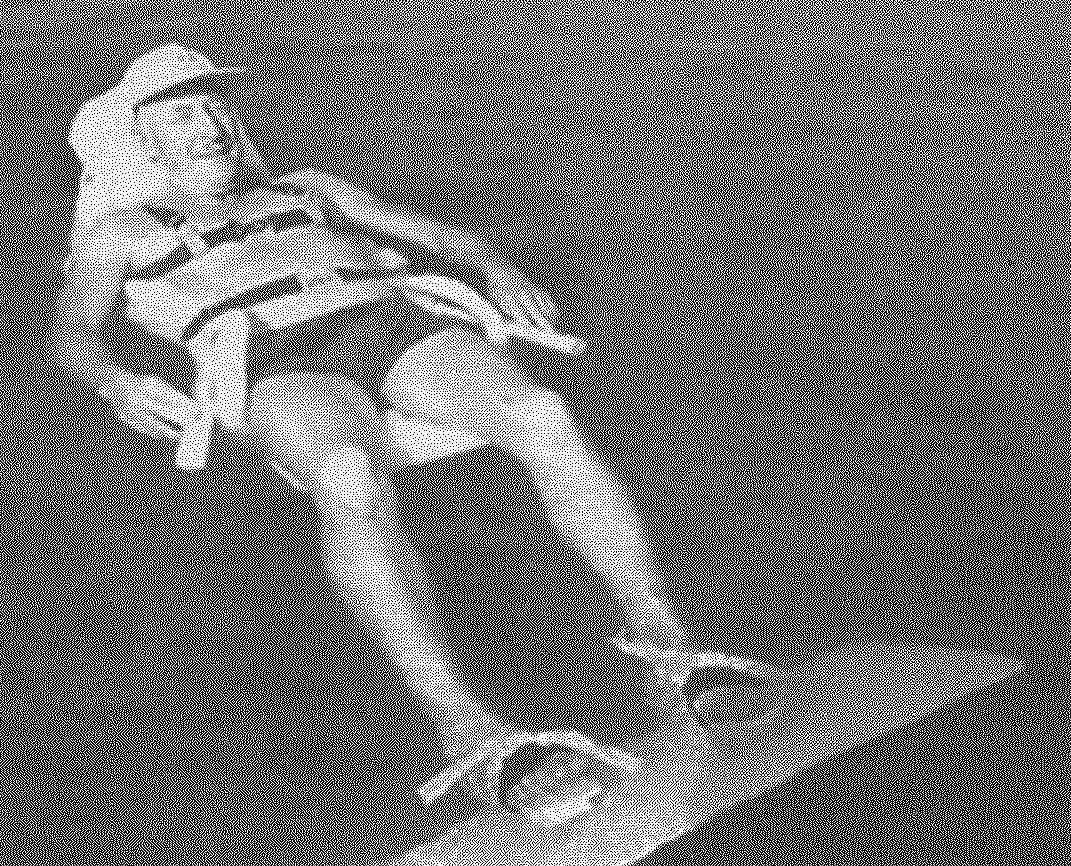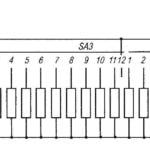 It is hardly necessary to prove to anyone, what are the benefits to human health water swimming is much greater than even all the recognized Jogging. But while running, when you get tired, you can stop and rest. When swimming this can afford only the few who can lie on the water. But because most just don’t dare to swim far (which, in General, correctly). But the attachment to the Bank reduces the interest of such health event, to say the least — mind.
It is hardly necessary to prove to anyone, what are the benefits to human health water swimming is much greater than even all the recognized Jogging. But while running, when you get tired, you can stop and rest. When swimming this can afford only the few who can lie on the water. But because most just don’t dare to swim far (which, in General, correctly). But the attachment to the Bank reduces the interest of such health event, to say the least — mind.
In addition, many people simply do not know how to swim, and to learn this is becoming increasingly difficult — an effect of the psychological factor (it’s late) and increases the fear of water.
So what — do you want such people to abandon the ship? In any case!
To do this, I want to offer the readers of the magazine “Modelist-constructor” idea brought in a proven simple design, which I have called “aquaplane”. The system is designed for intensive sailing even for people who cannot swim and for relaxing on the water with reliable fixation of the body in position “lying on back”.
Design “aquaplane” is quite simple and allows us to produce the kit with his hands, not only craftsmen, but also representatives of the weaker sex. But it is better to work together, because there are operations that were traditionally performed by women (e.g., sewing case), and there are those that require male hands (in particular, work with metal).
Before proceeding to the manufacture of parts and components “aquaplane”, it is necessary to understand some features of preserving the buoyancy of a person.

Fixture for swimming and relaxing on the water “aquaplane”:
1 — float seat (foam); 2 — float-armrest (foam, 2 pieces); 3 — float-headrest (foam); 4 — case (fabric); 5 — waist strap; 6 — chest belt; 7 — shoulder strap (2 PCs.)
As you know, individuals are able to freely, without any tension lying in the water on the back and relax. Especially well it manages the fat people. But most of the swimmers to stay on the surface of water should make efforts and support to make movements with arms and legs and straining his neck.
The fact is that the body the average person has very little, besides “steel” buoyancy. The main float body — his chest, where there is air in the lungs. But the legs, the head is heavier than water and therefore sink.
Therefore, it is necessary to adopt a series of measures to balance the buoyancy of all parts of the body besides the head necessary to give a margin of buoyancy, a person must be above the water surface.
To achieve this, you must have at least two supporting float: float-pillow (she will support the head) and the float seat (it will not sink legs). To improve the stability and comfort of navigation, and most importantly, for the freedom of manipulating the hands of nice to have the sides even floats-arms.
The names of the floats you can already guess that you need to produce something similar to a chaise lounge, just floating.
Now get down to business.
First, it is necessary to make four separate float. The most suitable material for them — the foam (like availability and cost and ease of processing). It can be bought in shops of building materials, or even use the backing from the foam factory packaging of household appliances, which is thrown away as useless, cut out of her matching fragments.
You can make floats from foam, pre-arranging for them the appropriate forms and filling them. The shape of the floats can be simple, in the form of a rectangular parallelepiped. But if you expect to swim fast, try to keep the floats (especially the “pillow”) have faired. The approximate volume of the float-cushion of about 3 l (3 DM3), the remaining 1.5 liters. also in the float-pillow top would be nice to make a small depression — the nest is a cradle for the head so it is not pushed sideways.
To cut a blank from a piece is not a knife, but better — saw blade blade from a metal saw. To grind edges, and faces not only on the sandpaper, but an ordinary grater for vegetables. If there is not a single piece of foam, the float can be glued to any nitrocream of separate pieces.

The paddle and its mounting on the leg:
1 — the blade (plywood, s6); 2 — sole (plywood, s6, 2); 3 — lining (tree, s in place, 2 pieces); 4 — fastening (ski or similar, 2); 5 — areas-base (stainless steel, sheet s2); 6 — hinge (card loop, 2); 7 — leg (2 PCs); 8 — fastening of the sole to the lining (screw 8 PCs.); 9 — fastening the soles to the ground-based (bolt M4 8 PCs); 10 — mount bases to the hinge (rivet, 4 items); 11 — fastening of the hinge to the blades (with extended bolt M4 washer, 4 PCs.)
If possible, it is possible to make two or three sets of floats, of different sizes. Then a “floating chaise” you can use different ground or just one of them — but “easy to wear” or in a wetsuit.
I’ll tell you that the optimum volumes (sizes) of such floats when swimming on the “aquaplane” the head is above the water level, the torso is under water at the surface, and the elongated legs is at a depth of 30 — 35 cm.
Now it is necessary somehow to provide the reciprocal relationship between floats. Ways to ensure that you can think of a few, for example, belts. But, in my opinion, this is best done using tissue case, as in the conventional lounger.
The fabric will fit almost any, including and not very durable — after all, unlike “land” version of the chaise longue in the “aquaplane” it is not to act heavy loads (e.g. body weight) either in water or on land. It is desirable that the fabric was bright and not very thick, not very wet, heavier design in the water, and quickly dried up in the air. The length of the cover from the top of the head to the knees. Given the bends to the pockets under the floats of cloth for man with height 170 cm, you will need a little more than two meters. Width — 450 mm. the Last size is derived from the calculation: 400 mm — width of the torso at the level of the blades and 25 mm under the bends on both sides.
If you can not find a solid two-meter cut of the fabric, the cover can (and need) to sew pieces of material, not thick, as when stitching on the machine will need to stitch four layers of fabric. Otherwise, you will need to stitch the pieces manually when the quality of the joints is worse, and work longer.
First things first, whether whole cloth or pieces, modernem on both sides with 25 mm cloth and prostrochite. In addition, the fabric edges will not mahr, it will add additional longitudinal strength.
Now, with the wider end of fabric to wrap the foam seat and mark where you need to make a seam. Measurement of small stock (20 mm) and bent it to pristroit edge of the panel. Turn the pocket to the seat. If there is a concern that the float may fall out of pockets, edge bending, it is necessary to insert the string or elastic band, making a near transverse suture on both sides a pair of small serged slits.
The same operation be repeated on the other end of the case with a fuse-pillow.
Further, departing from the pillow seam 180 mm, pristrochite cross seams to the main canvas to its full width an extra piece of fabric with a length of 350 mm. Departing from the seams inside of 60 mm, will make two more cross-stitch. So, get a large drawstring pocket and two. In drawstring subsequently inserted pristezhnye belts and leashes floats-armrests. And in the pocket you can put a plastic “air” mitigating strip (they also pack the appliances, and then thrown away). Strip will protect the back of the swimmer from accidentally touching the bottom in shallow water.
For floats-armrests are made of individual covers in the form of tubes, the ends of which are also delayed. Through the covers missing cords, the ends of which are tied to the straps. For this purpose belts should be provided with rings near the edge of the cover or here to perform the corresponding holes.
Underwater paddle — a separate, but too basic piece of kit for diving. It will help to quickly overcome the significant body of water, like the flippers, such as whales or tail — fish.
The paddle blade is made from thin, light, but sufficiently rigid material. It is important that the paddle had a buoyancy of at least zero. The most available and suitable with my poor choice was a sheet of plywood, thickness 5 — 6 mm size 900×400 mm, which corresponds to the maximum overall dimensions of the finished blade. Therefore, it is necessary to show care in the performance of harvesting operations — the cutting of blanks from a sheet of plywood.
To do this, it would be nice to moisten the cutting line from both sides of the water, and cut with a hacksaw, fine teeth. The final form of the blade — in the form of an isosceles trapezoid, one base of which is greater than another 100 mm. But you can make the sides rounded.

“Aquaplane” in another embodiment, instead of floats-used armrests PU foam seals inserted in kuliski cover
To give the blade the plywood water resistance, it must be impregnated with hot linseed oil. This varnish should be reheated in a “water bath”. “Bath” is prepared as follows: the Bank with linseed oil is put in another jar a little more (you can and a saucepan), which had previously poured a little water (two fingers). Capacity to put on a slow fire and heat the water (but not boiling). After removing the dish from the stove (do not remove the jars with a drying oil from the water) with a brush to apply hot linseed oil on the surface of the blade. But take particular care to soak the edges (side ends). After the first coat has dried, heated again, the varnish, apply a second coat. After that, the entire blade must be covered with waterproof paint, for example based on latex.
The next stage is the production of fasteners for the legs to the blade. How reliable, and most importantly, easy mounting will depend greatly feelings and impressions from the voyage on the “aquaplane”.
In the process of design I have fabricated and tested several options, like bare feet and shoes.
Offer readers not the easiest of them, but I think the most reliable, which I call the “beach”.
The basis for this attachment is a small area with a width of 100 mm and the same length (from back of heel to mid-foot), made of metal (stainless steel or aluminum) plate with a thickness of 1,5 — 2 mm. it is Clear that (as, indeed, and fasteners) included should be two on each leg.
With the blade platforms-bases are connected pivotally by means of ordinary hinges matching card for Windows. When it comes to the basis of one half-loop is attached with aluminum rivets, and the blade another half-loop privertyvaetsja by screws M4 flat-head and wide washers under the nuts. The hole in the plywood is also impregnated with hot linseed oil, and grease in her obmenivaetsya and bolts. Covered with varnish and hinges, except the hinges, which are then lubricated.
Further, from the same plywood cut two soles according to the shape and size of the feet specific swimmer, one under the left leg, the other under the right. If the paddle is intended for General use, the size of the soles you can take on the 43 — 44th Shoe size, although swim with the paddle will not be all equally convenient.
The soles are attached back to the basics with M4 bolts with countersunk heads, with the heads recessed into the sole and nuts rolled under the foundations. If the rods bolts are long, cut them flush with the nuts.

Paddle for intensive sailing on the “aquaplane”. The soles are angled 90° relative to the plane of the paddle (as in “idle” when the swimmer bends his legs and pull the oar closer to the “aquaplane”)
To the front of the soles on the bottom are fastened with wooden pads four countersunk screws, wrap the top. On the form they repeat this portion of the sole. The height of the pads is equal to the sum of the thickness of hinges and metal plates.
Under the plywood soles on the bottom are straps or ski bindings. For them in the lining will need to pre-cut transverse groove. Plywood sole and a wooden block before installation it is necessary proolifit and paint as the paddle blade.
The making of “aquaplane” is finished. But before you go on it in “far” swimming, it should be tested in shallow water. To put the float on shore. First wearing shoulder straps — zipper chest and adjusting the floats, armrests — zipper and waist belt. The same operation can be performed in shallow water.
If the volume of floats is chosen correctly, then the swimmer, lying on the back should hang in position: the head is above water, and the basin below the shoulders 100 — 150 mm, legs slightly bent at the knees. In this position the swimmer can move freely, making the strokes with my hands.
If the floats loungers all right, fasten your seat-to-feet underwater paddle. Don’t go out far from shore, learn basic footwork for rowing with an oar. Float on “aquaplane” as, for example, to ride a bike, you have to learn, but to master it easier and faster.
I wish you pleasant sailing! I assure you: you will get a lot of new sensations, including the feel and weightlessness.
Y. ANTONOV, Tolyatti



